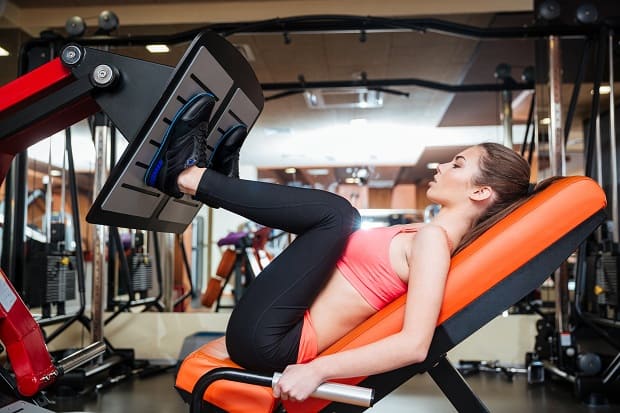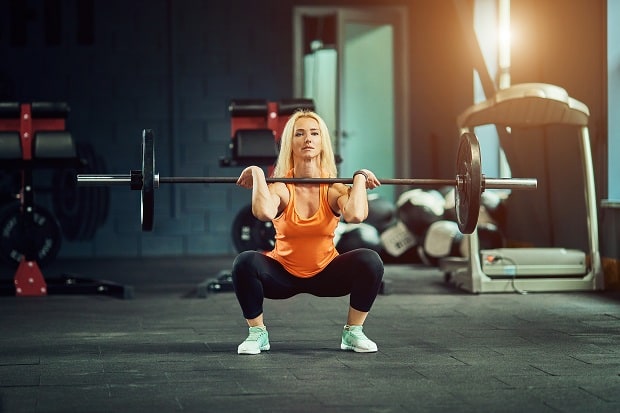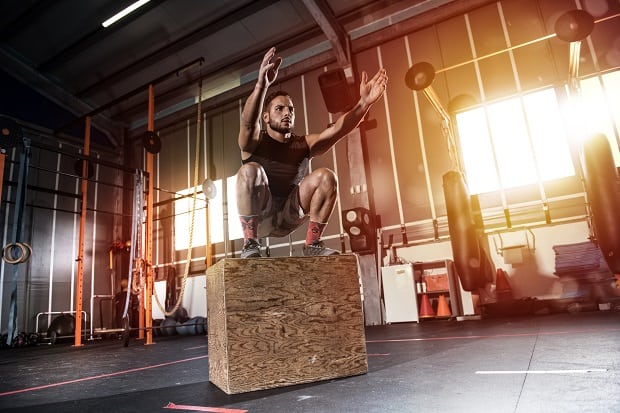
Knee ligament injuries are as common in CrossFit as they are in many other sports: weightlifting, athletics, powerlifting , football, hockey, and many others. There may be many reasons for this, but most often three factors lead to this: improper exercise technique, huge working weight and insufficient restoration of joints and ligaments between workouts.
Today we will look at how to avoid knee ligament injury while doing CrossFit, what exercises can contribute to this, and how to optimally recover from injuries.
Knee anatomy
The knee ligaments are responsible for the normal course of the main function of the knee joint – flexion, extension and rotation of the knee. Without these movements, normal movement of a person is impossible, not to mention fruitful sports.The ligamentous apparatus of the knee has three groups of ligaments: lateral, posterior, intra-articular.
The lateral ligaments include the peroneal and tibial collateral ligaments. To the posterior ligaments – the popliteal, arcuate, patellar ligament, medial and lateral supporting ligaments. Intra-articular ligaments are called cruciate (anterior and posterior) and transverse ligaments of the knee. Let’s dwell a little more on the first ones, since every second athlete can face a cruciate knee ligament injury. The cruciate ligaments are responsible for stabilizing the knee joint, they keep the lower leg from moving forward and backward. Recovery from a cruciate knee ligament injury is a long, painful and challenging process.
Also important elements in the structure of the knee are the outer and inner menisci. These are cartilage pads that act as a shock absorber in the joint and are responsible for stabilizing the position of the knee under load. Meniscus tear is one of the most common sports injuries.
Trauma Exercises
Below we present to your attention some of the most traumatic exercises used in sports, including in crossfit, which, if the technique is violated, can lead to damage to the knee ligaments.
Squats
This group can include all exercises where all or most of the amplitude is passed through squats, be it classic or front squats with a barbell, thrusters, barbell jerk and other exercises. Despite the fact that squats are the most anatomically comfortable exercise for the human body, knee injury or ligament rupture during exercise is common. This most often occurs when the athlete cannot handle the heavy weight when standing up and the knee joint “goes” slightly inward or outward relative to the normal trajectory of movement. This leads to injury to the lateral ligament of the knee.
Another cause of ligament injury while squatting is heavy working weight. Even if the technique is perfected, the heavy weight of the weights put a huge load on the ligaments of the knee, sooner or later this can lead to injury. For those athletes who do not use the principle of periodization of loads and do not allow their muscles, joints and ligaments to fully recover, this is observed everywhere. Preventive measures: use knee bandages, warm up thoroughly, recover better between hard workouts and pay more attention to the technique of performing the exercise.

Jumping
All jumping exercises from CrossFit should be conventionally included in this group: squats with jumping out, jumping on a box, long and high jumps, etc. In these exercises, there are two points of amplitude where the knee joint is subject to strong stress: the moment of jumping up and the moment of landing.
The movement when jumping up is explosive, and, in addition to the quadriceps and gluteal muscles, the lion’s share of the load falls on the knee joint. When landing, the situation is similar to squats – the knee can “go” forward or to the side. Sometimes, when performing jumping exercises, the athlete accidentally lands on straight legs, in most cases this leads to injury to the collateral or supporting ligaments. Preventive measures: do not land on straight legs, ensure the correct position of the knees when landing.

Leg press and leg extension in the simulator
Of course, these are excellent exercises for the isolated study of the quadriceps muscle of the thigh, but if you think about their biomechanics, they absolutely contradict the angles that are natural for humans. And if in some simulators for leg presses you can still catch a comfortable amplitude and do a kind of “back squat”, then sitting extension is the most uncomfortable exercise for our knees.
The simulator is designed in such a way that the main part of the load falls on the drop-shaped head of the quadriceps, which is simply impossible to load without creating a strong compression load on the knee joint. This problem is especially acute when working with a large weight and a strong delay at the peak voltage point. Popliteal ligament injury becomes a matter of time. Therefore, we strongly recommend that you take preventive measures: work with moderate weight, do not make long pauses at the top or bottom of the amplitude.
Remember, knee injury can often be prevented by controlling full range of motion and following correct exercise technique. Also, regular use of chondoprotectors will be a good preventive measure: chondroitin, glucosamine and collagen contained in them in large doses will make your ligaments stronger and more elastic. Also, athletes are advised to use warming ointments, this will not allow muscles, joints and ligaments to “cool down” between sets.

Types of knee ligament injuries
Traditionally, knee ligament injuries are considered an occupational disease in many athletes. However, even people far from sports can injure ligaments in an accident, strong blows to the shin, falls on the knee or jumping from great heights.
- 1 Sprained ligaments – knee injury that occurs due to overstretching of the ligaments, being subjected to too heavy a load. It is often accompanied by micro-tears of the ligaments.
- 2 Ligament rupture – knee injury, accompanied by a violation of the integrity of the ligament fibers. Ligament rupture is of three degrees of severity:
- only a few fibers are damaged;
- more than half of the fibers are damaged, which limits the mobility of the knee joint;
- the ligament breaks completely or comes off from the place of fixation, the joint practically loses its mobility.
Symptoms of knee ligament injuries are the same: sharp severe pain in the knee, cracking or clicking sensation under the kneecap, swelling, limitation of knee movement, inability to transfer body weight to the injured leg. To start the correct treatment of the knee after an injury (sprain or rupture of the ligaments), you must first make an accurate diagnosis, only a doctor can do this, you should not guess or diagnose “by eye” on your own, this can only be done with an X-ray, computed tomography , MRI or ultrasound.



